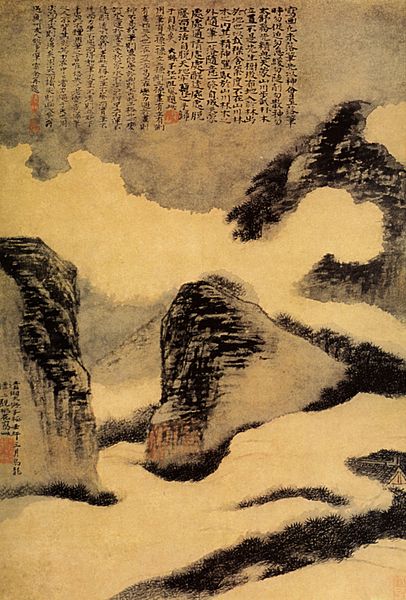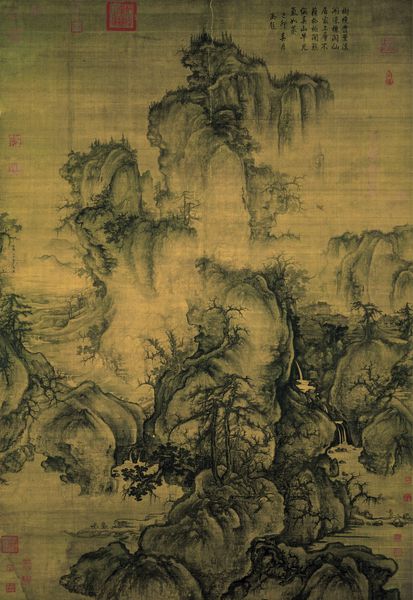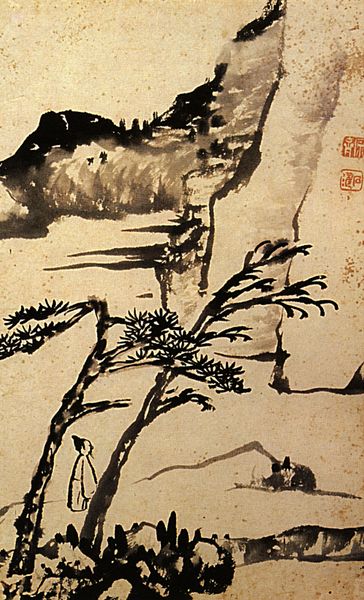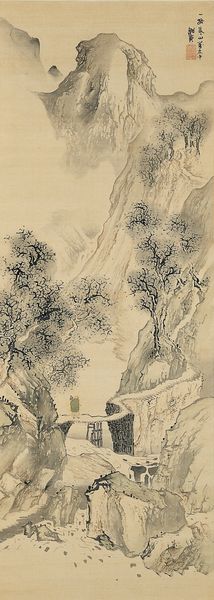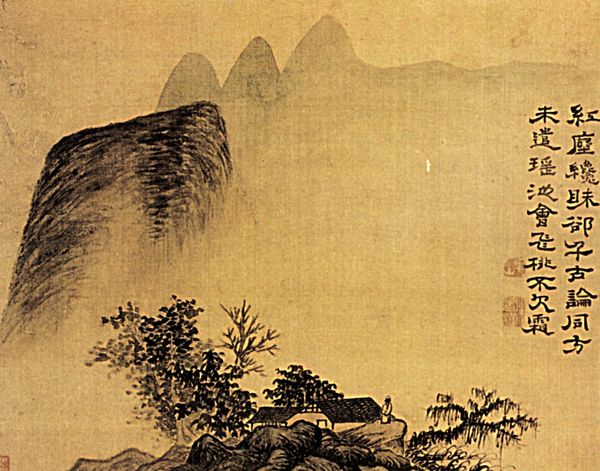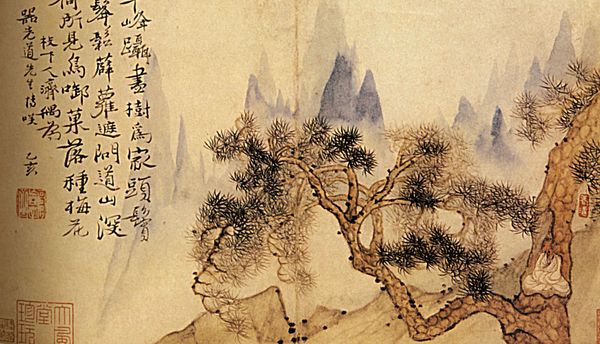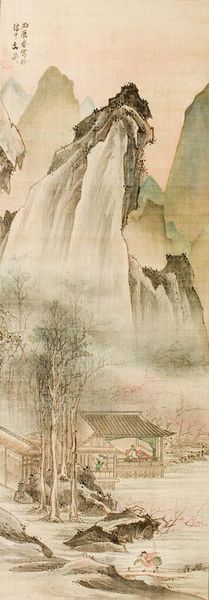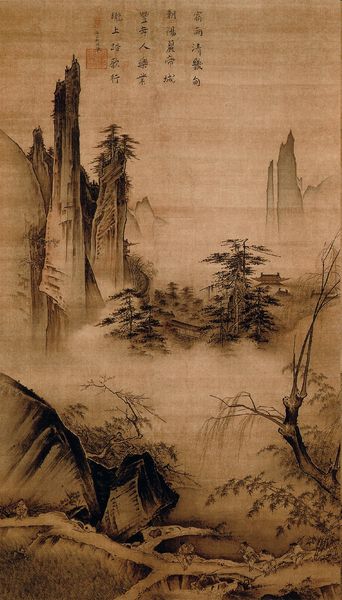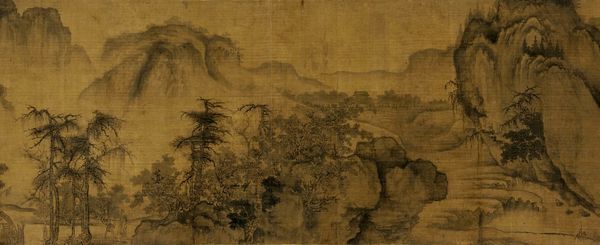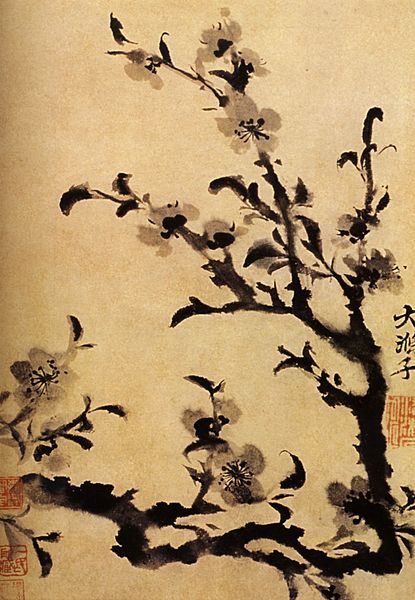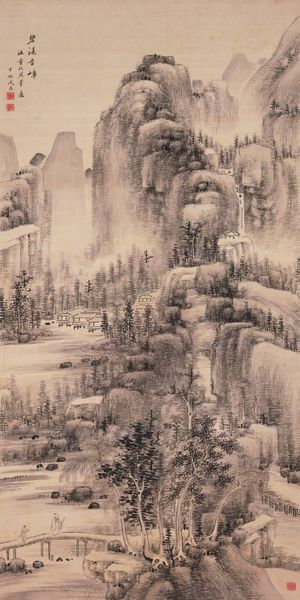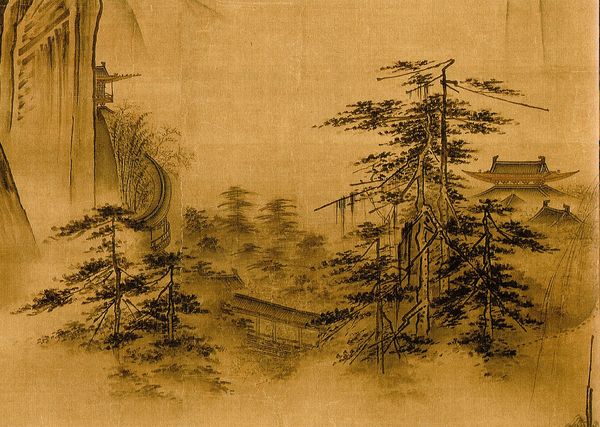
tempera, painting, watercolor
#
water colours
#
tempera
#
painting
#
asian-art
#
landscape
#
watercolor
#
mixed medium
#
mixed media
#
watercolor
Copyright: Public domain
Curator: The landscape before us is called "Pavilions in the Mountains of the Immortals," attributed to Qiu Ying. It’s a tempera and watercolor on silk, currently housed in the National Palace Museum in Taipei. I’m immediately struck by its ethereal, almost dreamlike quality. What are your first impressions? Editor: It’s beautiful, but it feels staged. The architecture, those pavilions, seems to be vying for our attention amongst the grand landscape. Like the landscape is performing its grandeur for the royalty within those pavilions. What story do you think this is trying to tell? Curator: That's an astute observation. Paintings such as this were commissioned by wealthy patrons and were used to convey ideas of power, social status, and cultural sophistication. It speaks volumes about the patron's taste and refinement, and equally to the societal pressures for nobility to align with these ideals. Notice the scale; how do these compressed and steep heights reflect the position of the court? Editor: You’re right. It's not just a pretty picture. Those meticulously rendered pavilions suggest that someone—or a group of someones—saw themselves as inherently connected to this majestic scene. What about the role of those reddish stamps that almost function as additional architectural elements in the work? Curator: Good eye. Seals act like signatures, but in this cultural context they have had an elevated and official stamp, historically functioning as declarations of authenticity or indicating ownership by important collectors, emperors, or connoisseurs, imbuing it with increased prestige. Does the presence of such symbols of status impact how you understand it? Editor: Absolutely. It pulls me away from the serenity of the landscape and plants me back in reality. This wasn’t just art for art’s sake; it was art for power's sake. I was initially seduced by the painting's serene visuality, but I leave with a clearer grasp of how its production, display, and appreciation were inextricably linked to specific historical forces. Curator: Exactly, and that is how context transforms viewing, hopefully with richer results.
Comments
No comments
Be the first to comment and join the conversation on the ultimate creative platform.

